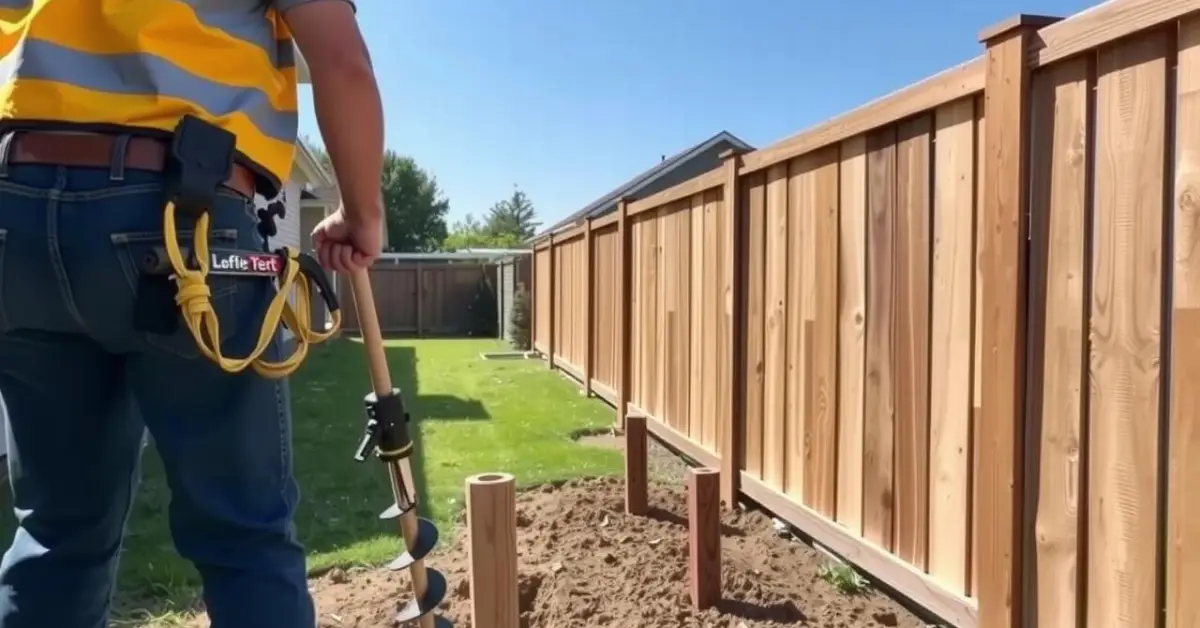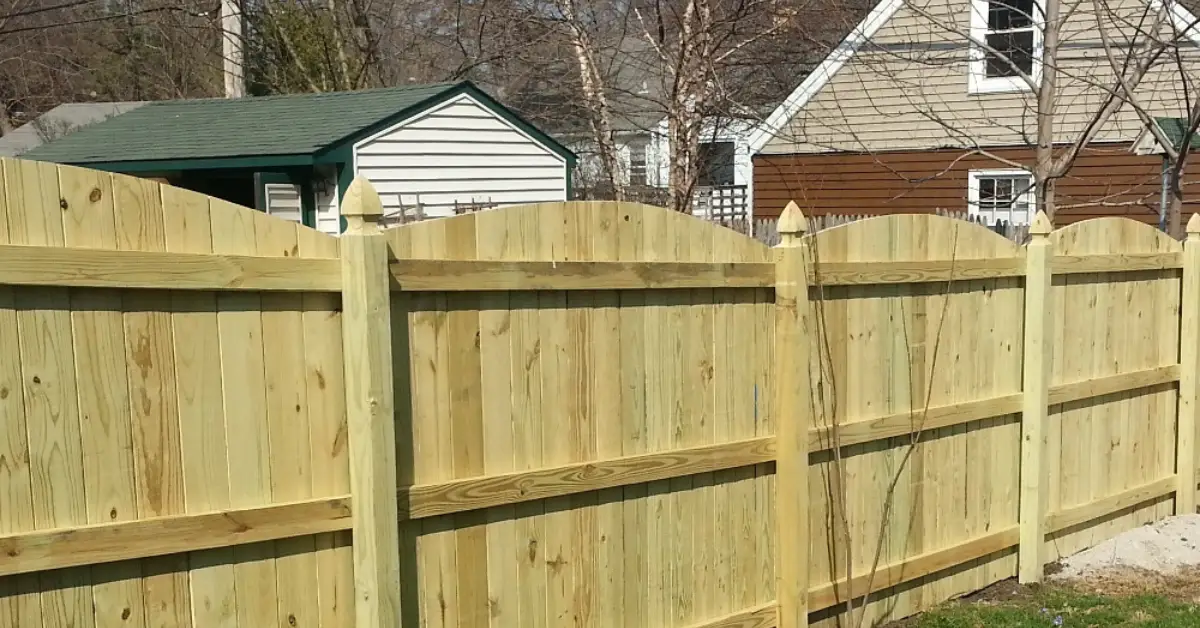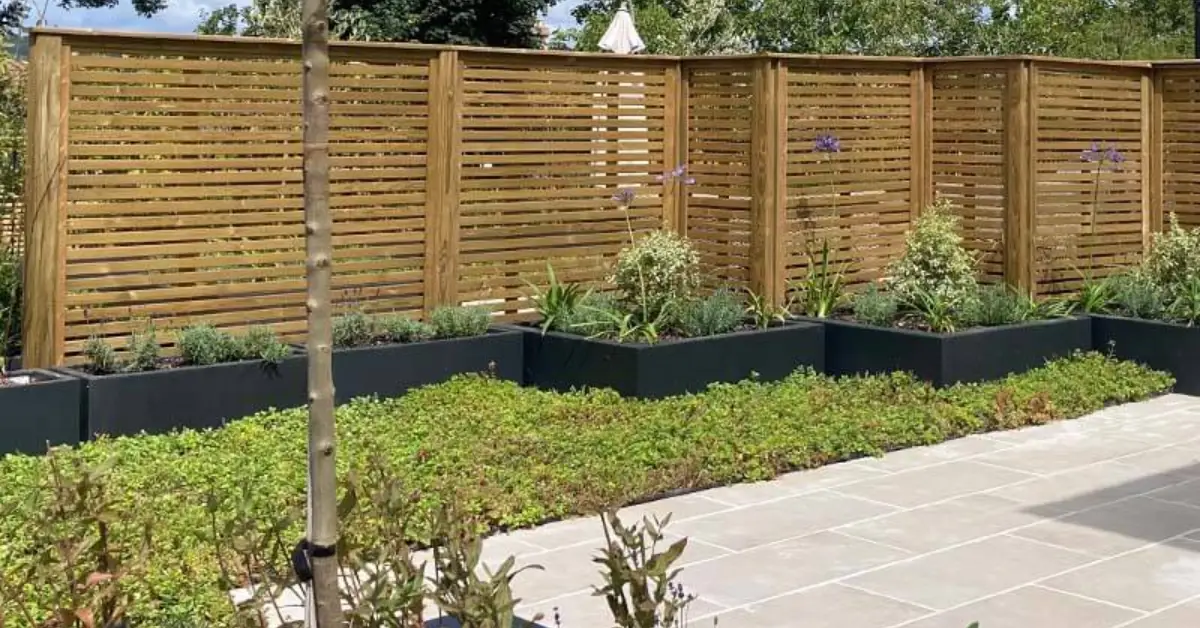Top 6 Affordable Privacy Fence Ideas for Small Yards
When you’re trying to update your backyard, the fence is usually the last thing you want to spend money on. I get it. A full privacy fence can run into the thousands, and most homeowners don’t expect that kind of sticker shock until they start getting quotes. That’s why I like looking at the options that give you the most impact for the smallest spend. You don’t need a big budget to create a space that feels private, clean, and pulled together — you just need the right materials and a plan that won’t drain your savings.
In this guide, I’ll walk you through smart, realistic fence ideas that people across the country are actually using. These aren’t Pinterest fantasies. They’re practical options backed by real costs, real homeowner experiences, and simple steps you can take even if you’re not a hardcore DIY person. Whether you want quick privacy, a long-term upgrade, or a stopgap fix until you’re ready for something bigger, you’ll find an idea that fits your yard and your wallet.
Before we dive in, tell me this: what’s the main reason you’re looking for a budget fence — privacy, pets, curb appeal, or something else?
Understanding Fence Costs: What “Budget-Friendly” Really Means
When you and I talk about staying on a budget, we’re not just chasing the lowest number. We’re trying to understand what things should cost and why some materials end up more expensive than they first look. Before you decide on any fence style, you need a clear picture of how pricing works. It keeps you from overspending or choosing something that won’t hold up long-term.
Common Cost Drivers (materials, labor, permits)

A lot of homeowners get surprised during installation because they only think about the panels. In reality, several small factors stack up fast. If you want a quick comparison of what affordable fences look like in real life, BHG has a helpful rundown you can skim anytime.
Here’s what really drives your cost:
- Materials: This is where most of your money goes. Wood, pallet boards, bamboo rolls, and wire options all fall in very different price brackets.
- Labor: If you bring in a pro, your total can double. DIY saves money but requires tools and patience.
- Posts and hardware: Concrete, brackets, and framing often cost more than people expect.
- Permits: Some cities require approval for fences over a certain height, and fees vary.
- Ground conditions: Slopes, tree roots, and rocky soil make installation harder and more expensive.
Typical Price Ranges for Cheap Fence Types
To help you compare options fairly, here are straightforward national averages from common homeowner cost data. These numbers aren’t inflated—they reflect what people actually spend:
- Pallet fencing: About $2–$12 per foot
- Chain-link: Around $9–$12 per foot for basic galvanized
- Wire fencing:
- Chicken wire: $1–$3 per foot
- Hog wire: $3–$5 per foot
- Split-rail fencing: Roughly $11–$29 per foot
- Bamboo rolls or panels: Around $3–$5 per foot
- Living hedges: About $5–$10 per foot to establish
These ranges give you a clear starting point so you’re not comparing an expensive style with a budget fence and assuming they’re the same.
6 Affordable Fence Ideas to Transform Your Space
You don’t need a big budget to make your backyard feel private and pulled together. These are the fence ideas I usually recommend when someone wants real impact without overspending. I’ve added cost ranges, difficulty levels, and the kind of yard each idea actually works for.
1. Pallet Fence
If you’ve ever seen pallet fences online, you know how surprisingly good they look for almost no money. The reason they stay so affordable is simple: you can source pallets for free or at a very low cost if you know where to look.
- Cost: About $2–$12 per foot
- Pros:
- Very cheap
- Easy to paint or customize
- Eco-friendly option
- Cons:
- Needs solid posts to stay stable
- Shorter lifespan unless sealed
- DIY Complexity: Moderate
- Best Use-Case: Quick privacy, garden areas, renters
- Why this helps: You get a “real fence look” without spending like you’re building one.
2. Pressure-Treated Wood Fence

If you want a clean, traditional look without going into premium materials, this usually gives you the best value.
- Cost: Around $12–$20 per foot installed
- Pros:
- Sturdy and long-lasting
- Good privacy
- Cons:
- Needs staining or sealing
- Can warp over time
- DIY Complexity: Medium to high
- Best Use-Case: Classic backyard feel on a tight budget
- Why this helps: You get durable structure and good coverage without paying cedar prices.
3. Split-Rail Fence
This is one of the simplest and most affordable ways to define your yard without needing tons of materials.
- Cost: $11–$29 per foot
- Pros:
- Rustic look
- Very DIY-friendly
- Minimal hardware
- Cons:
- No privacy
- Works best in wide or open yards
- DIY Complexity: Easy
- Best Use-Case: Large properties, boundary marking
- Why this helps: Even long fence runs stay budget-friendly.
4. Wire Mesh / Chicken Wire / Hog Wire
When you need a functional fence more than a decorative one, wire fencing works extremely well.
- Cost:
- Chicken wire: $1–$3 per foot
- Hog wire: $3–$5 per foot
- Pros:
- Super affordable
- Great for pets and gardens
- Light and quick to install
- Cons:
- No privacy
- Needs framing to look finished
- DIY Complexity: Easy
- Best Use-Case: Gardens, small animals, temporary boundaries
- Why this helps: It’s the cheapest way to create a safe, enclosed area.
5. Bamboo Fence
If you want something that feels warm and natural, bamboo gives you quick privacy without the heavy look of wood panels.
- Cost: $3–$5 per foot
- Pros:
- Eco-friendly
- Easy to install
- Great visual appeal
- Cons:
- Needs sealing or weather protection
- Can wear faster in wet climates
- DIY Complexity: Easy
- Best Use-Case: Patio screens, pool areas, decorative privacy
- Why this helps: You get an instant visual upgrade at a price most people don’t expect.
6. Living Fence (Hedge)

A hedge takes patience, but once it fills in, it offers privacy, shade, and a soft, natural boundary.
- Cost: Around $5–$10 per foot
- Pros:
- Green, sustainable
- Absorbs sound
- Can outlast wood with proper care
- Cons:
- Needs trimming
- Takes time to grow
- DIY Complexity: Very easy
- Best Use-Case: Long-term privacy, front yards, noise reduction
- Why this helps: If you’re planning ahead rather than rushing, this is one of the most cost-efficient privacy options.
Fence Hacks and Temporary Options When Funds Are Tight
There are times when you need privacy right now, but your budget just isn’t ready for a full fence. I’ve worked with plenty of homeowners in the same situation, and these short-term fixes always help. They’re cheap, fast to install, and flexible enough to remove or upgrade later.
Mesh Privacy Screens (no-dig mesh you can zip-tie)
Mesh screens have exploded in popularity because they give instant privacy with almost no effort. You don’t need posts, concrete, or any real tools. And if you saw The Sun’s piece on that viral Lowe’s fence hack — you already know why so many people are grabbing these mesh rolls for a quick backyard fix.
- How it works:
- Wrap the mesh along your existing fence or simple metal stakes
- Secure it with zip ties
- Why people use it:
- No digging or carpentry
- Fast install
- Adds privacy without the cost of panels
- Best for: Covering old chain-link, creating shade, or blocking a direct view
- Why this helps: You get usable privacy in minutes with almost zero labor.
Vinyl Lattice Panels (a cheap way to refresh an old fence)
Vinyl lattice is one of those upgrades that looks far more expensive than it actually is. It’s lightweight, weather-resistant, and instantly makes an older fence look intentional again.
- How it works:
- Attach lattice panels to the top or front of your current fence
- Cut edges to size for a cleaner fit
- Why people like it:
- Low cost
- Easy to handle
- Works well for adding height and texture
- Best for: Fences that still have solid structure but need a cosmetic boost
- Why this helps: You skip the cost of new wood and still get a more polished, private look.
Willow or Woven Roll Fencing (natural screening)
If you like a softer, natural look, willow roll fencing is one of the easiest temporary screens to install. The cost usually falls around $8–$15 per foot, which is far cheaper than building a new fence from scratch.
- How it works:
- Unroll the panel
- Tie or wire it to stakes or an existing fence
- Why people choose it:
- Warm, natural appearance
- Quick install
- Works well with garden spaces
- Best for: Patios, decks, and areas where you want privacy without a heavy structure
- Why this helps: You get an attractive screen without carpentry, concrete, or long-term commitment.
Don’t Forget Permissions: Planning, Permits & Regulations

Whenever I plan a fence project, I start with the permissions. It’s not exciting work, but trust me, skipping this step can cost you more than the fence itself. Every area has its own rules, and the last thing you want is tearing down a fence you spent days building.
Many cities require a permit if you’re installing a new fence or changing the height. To get a sense of how cities handle this, you can look at a typical process like the fence-permit guidelines shared by the City of Philadelphia. Your local rules may differ, but the steps are usually similar.
Some common things to check before you start:
- Height limits in front yards vs backyards. You may also want to understand the etiquette around shared boundaries, and this guide on what to know before painting a shared fence with your neighbor explains the key rules that often get overlooked.
- Material restrictions set by city codes or HOAs.
- Setback rules — how far from your property line the fence must sit.
- Whether your neighborhood has easements for drainage or utilities.
Quick Checklist Before You Build
- Confirm permit requirements with your city or county.
- Read your HOA rules, especially if you live in a community with uniform designs.
- Get your property line measured, or check your plat map if you have one.
- Talk to your neighbors about any shared boundaries. If you ever face a situation where someone puts up a structure without informing you, this guide on what to do when a neighbor builds a fence without asking walks you through the steps to protect your rights.
- Prepare a simple sketch of what you plan to build — most permit offices will ask for one.
This step isn’t fun, but it protects you, your money, and your time.
Maintaining Your Fence: What Every Budget Owner Should Know
A low-cost fence is great, but the long-term cost is what really matters. I always tell homeowners to plan for upkeep right from the start, because maintenance is what decides whether your fence lasts two years or twenty.
Here’s a simple breakdown to help you compare the ongoing cost of each option.
| Fence Type | Upfront Cost | Annual Maintenance | Typical Lifespan |
|---|---|---|---|
| Pallet Fence | Very Low | Moderate (seal, replace boards) | 3–5 years |
| Pressure-Treated Wood | Medium | Low–Moderate (stain, fix boards) | 10–20 years |
| Split-Rail | Low–Medium | Very Low | 10+ years |
| Wire Mesh / Chicken Wire | Very Low | Very Low | 5–10+ years |
| Bamboo Panels | Low–Medium | Moderate (seal, protect from weather) | 5–10 years |
| Living Hedge | Low–Medium | High (pruning, watering) | Decades |
A few things to keep in mind:
- Wood needs sealing or staining every few years.
- Wire fencing ages slowly but may sag if you don’t tighten it.
- Bamboo looks great but needs weather protection.
- Hedges take work but outlast almost everything once established.
This table gives you the real picture: the fence that’s cheapest today isn’t always the cheapest long-term.
Which Budget Fence Option Makes Sense for Your Yard?
Now that you’ve seen the costs, styles, and maintenance needs, the next step is choosing the fence that actually fits your life. I like to narrow it down using five simple questions:
- What’s your budget?
- How much DIY work are you comfortable with?
- Do you need privacy, or just a boundary?
- Do you need it now, or can you wait for growth (hedge)?
- What kind of look do you want in your yard?
Here’s a quick decision guide to help you pick fast:
- If you need privacy right now → pressure-treated wood or bamboo.
- If you want the lowest cost → pallet fencing or wire mesh.
- If you’re okay waiting and love greenery → a living hedge.
- If you want rustic, low-maintenance → split-rail fencing.
Choosing the right fence isn’t just about money — it’s about how you use your yard, how much time you want to spend on upkeep, and what you want the space to feel like. If you want to avoid misunderstandings while planning your layout, this guide on ways to prevent fence disputes with neighbors over property boundaries is a helpful reference before you start building.
Your 5-Step DIY & Planning Checklist

Whenever I help someone plan a budget fence, I break the entire process into five simple steps. If you follow these in order, you’ll avoid the usual mistakes and move from “idea” to “actual build” without confusion.
1. Measure your yard and map the fence line: Start by walking your boundary and measuring the full length. Sketch a simple layout so you know exactly where posts, gates, and corners will go.
2. Set a clear budget for everything: Include materials, tools, hardware, labor (if needed), and any permit fees. A clean budget keeps your project from snowballing once you start buying supplies.
3. Source your materials: Look for pallets, mesh rolls, bamboo panels, lattice, or wood boards. Compare local stores with marketplace listings — you’d be surprised how much you can save if you shop around a bit.
4. Decide if you’ll DIY or bring in help: Be honest about your skill level. Some fences (like pallet or wire mesh) are simple. Others, like wood posts set in concrete, take more precision and time.
5. Plan for maintenance and upgrades: Think beyond the install. Sealing wood, trimming hedges, tightening mesh — these small tasks keep your fence looking good for years.
Ready to Transform Your Yard? Here’s What’s Next
If you’re serious about upgrading your backyard on a budget, here’s what I recommend. Pick your top two or three fence ideas, get a quick cost estimate, and start with a small test section — maybe a short pallet panel or a simple wire-mesh run. Once you see how it looks and feels, you can scale the project at your own pace.
If you want to make things easier, you can grab the DIY Fence Checklist from Build Like New to stay organized through each step.
Either way, the next move is yours. What fence idea are you thinking of trying first?
Disclaimer: This guide is for general educational purposes only. Fence costs, material availability, and permit requirements can vary by location. Always check your local building codes, HOA rules, and consult a licensed professional when needed before starting any construction project.


